Aeroelastic and Structural Design Lab
Aeroelastic and Structural Design Lab
ASD Lab Menu
Research topics
Working with us
Publications
Partners
Contacts
More information about research topics
ASD Lab
More information about PhD Studentship
ASD Lab
ASD Lab aims at developing physic-based aircraft design methodologies including all the concurrent development aspects (manufacturing, assembly, certification, operation, environmental footprint) from the early stage with the objective of reducing novel configurations, material and technologies time to market. Emphasis is placed on the tighter discipline coupling (aero-structural, aeroelasticity, airframe-propulsion) imposed by efficient aircraft architectures.
Research topics
Main topics of our research are resumed in the table below. Three main lines are identified: Aerostructures, Flight Physics, and Aircraft Design & MDAO.
| Aerostructures | ||
|---|---|---|
| Structural optimisation | Structural design | DT virtual certification |
| Minimum weight structural optimisation | "Non black- metal" composite design | Composite impact damage evolution (bird-strike, FOD) |
| Buckling of composite stiffness panels | Analytical tools for quantitative configuration selection | Durability and DT design techniques |
| Optimal design for certification | Concurrent design for manufacturing and assembly | Short crack nucleation and growth |
| Aircraft Design MDAO | |
|---|---|
| Next-generation aircraft | Electric aircraft |
| Unconventional aircraft optimal design | Hybrid/Electric propulsion configuration |
| Collaborative Multidisciplinary Design Analysis and Optimization | Thermal management |
| Aero-structural MDAO | Performance, weight and cost module adaptations |
| Flight Physics | |
|---|---|
| Aeroelasticity & Loads | Aircraft Aerodynamic Design |
| Aeroelastic static and dynamic stability and responses | Transonic Aerodynamic Shape Optimization |
| Aeroelasticity with aerodynamic and structural nonlinearities | Induced Drag minimization |
| Aeroelastic sensitivities | Automated Aerodynamic Module (Geometry, Mesh, Analysis, Optimization) |
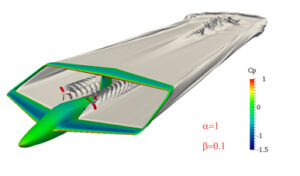
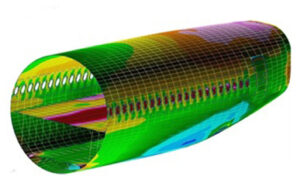
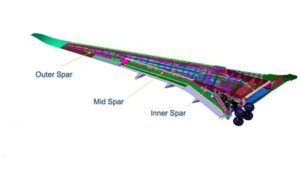
People
ASD Lab directors are Drs. Rauno Cavallaro and Andrea Cini. They are faculty members at the Bioengineering and Aerospace Engineering Department at the Universidad Carlos III de Madrid (UC3M). Other current members of the Lab are PhD candidates and Master and Bachelor students.
Directors
Rauno Cavallaro
Rauno Cavallaro obtained his MSc in Aeronautical Engineering from the University of Pisa in 2009. He worked from July 2009 and August 2010 in Bauhaus Luftfahrt, a German research institute financed by the Bavarian government and several aeronautical industries, where he was in charge of the design of unconventional configurations.
In August 2010 Dr. Cavallaro moved to San Diego to pursue his doctoral degree in the prestigious joint doctoral program bewteen San Diego State University (SDSU) and University of California San Diego (UCSD). Under guidance of his mentors, Prof. Lucaino Demasi (SDSU) and Prof. David Benson (UCSD) his research focused on the nonlinear aeroelastic behavior of Joined Wings. During his PhD Dr. Cavallaro gained several prestigious awards, such as the Collier Research HyperSizer/AIAA Structures Best Paper Award. Moreover he was granted several scholarship, e.g., the Inamori Fellowship.
After earning hid Doctoral Degree Dr. Cavallaro joined in April 2015 Prof. Daniella Raveh’s group at the Technion University. He worked on reduced-order models for nonlinear aeroelastic problems. In February 2016 Dr. Rauno Cavallaro joined Universidad Carlos III de Madrid as a “Profesor Visitante”. His research focuses on innovative aircraft design, hybrid/electric aircraft, multidisciplinary design and optimization and aeroelasticity.
Andrea Cini
Senior Staff
Antonio Raimondo
Antonio Raimondo received the MSc in Aeronautical Engineering and PhD in Aerospace Science and Technology from the University of Campania “Luigi Vanvitelli” in 2011 and 2014. During his doctoral studies he performed research activities oriented to the development of numerical/experimental models for the monitoring and simulation of damage in composite materials structures. As part of his doctoral activities, he spent six months as a visitor researcher at NASA Langley Research Center in Virginia, USA.
After three years of postdoc in Italy, at the beginning of 2018, Dr. Raimondo joined the Aerospace Structures and Computational Mechanics group at the Delft University of Technology in the Netherlands, where he carried out research work within the framework of a project funded by the Office of Naval Research of the U.S. Navy, focused on the fatigue life prediction of composite structures. Later, he was awarded of a two years “Marie Curie Leading Postdocs” fellowship, receiving funding for the development of computationally-efficient numerical methodologies able to accurately predict fatigue-induced damage in large-scale composite structures. In May 2022 he joined the University Carlos III of Madrid as “Profesor Visitante”. His research focuses on buckling, static and fatigue damage tolerance of composite and metallic structures for aeronautical and space applications.
Members
Iván Castro Fernández
PhD candidate. Mr. Castro-Fernández is an Aerospace Engineer (Bachelor’s degree from Universidad de Cádiz, Spain + Master’s degree from Universidad Carlos III de Madrid). He is pursuing a PhD in Aeroelasticity of Kites applied to Airborne Wind Energy (AWE) with Prof. G. Sánchez-Arriaga and Prof. R. Cavallaro as co-advisors. He is involved in the GreenKite-2 project (40k€, 2020) funded by the Spanish Agencia Estatal de Investigación. His activities are focused on numerical aerodynamics and aeroelasticity as well as the flight testing of AWE systems. In 2021, he participated in a parabolic flight campaign organized by the European Space Agency (ESA) as a member of one of the selected teams. The team built a technology demonstrator for a novel transformable spacecraft. He also provides teaching assistance in the courses of Flight Mechanics I (Aerospace Bachelor’s degree) and Space Science (Master’s in Space Engineering) at University Carlos III of Madrid and has been an advisor for more than five Bachelor’s theses. Information on his doctoral thesis is available at the following link.
Raúl Quibén Figueroa
PhD Candidate. Mr. Quiben is earning his PhD, under the co-supervision of Prof. Manuel Soler and Prof. Rauno Cavallaro, focusing his research on the multidisciplinary optimization of new generation H2 aircraft design and operations with an environmental impact perspective. He is currently involved in the HYDROGENATING project.
Mr. Quiben graduated in Aerospace Engineering (BSc degree 2016-2020) from Universidade de Vigo and in Aeronautical Engineering (MSc 2020-2022) from Universidad Carlos III de Madrid. During his studies he did two exchange programs at TOHOKU University (Japan 2019-2020) and Politecnico de Milano (2022). Information on his doctoral thesis is available at the following link.
Luca Scalia
PhD Candidate. Mr. Scalia graduated in Aerospace Engineering (B.Sc. degree, in 2017) and Aeronautical Engineering (M.Sc. degree, in 2020) at Politecnico di Milano with a specialisation on Aircraft Structures. During his studies, he spent six months at Munich Technical University (October 2019 – March 2020) doing his master´s thesis on Crashworthiness Optimization of a lattice core sandwich panel. After graduation, he was employed for nine months as a mechanical designer, working on the design of an automatic line for the welding and assembly of rebar cages for concrete reinforced structures. His main interests are Computational Mechanics, Aerodynamics, FE Analysis and CFD. He is now a PhD Candidate at the Aeroelastic and Structural Design Lab (ASD Lab), working under the supervision of Prof. Andrea Cini on the development of design tools for the virtual certification of new generation wings. Information on his doctoral thesis at the following link.
Working with us
PhD Open Position
ASD Lab is pleased to offer a fully funded PhD position in partnership with Experimental Experimental Aerodynamics and Propulsion Lab to develop methodologies for hydrogen-powered regional aircraft design, optimisation and environmental impact assessment. Please review the attached document for more information.
ASDLab directors are Drs. Rauno Cavallaro and Andrea Cini. They are faculty members at the Bioengineering and Aerospace Engineering Department at the Universidad Carlos III de Madrid (UC3M). Other current members of the Lab are PhD candidates and Master and Bachelor students.
Bachelor and Master Science Theses
A comprehensive list of possible theses for UC3M students is available in the intra-web SIGM@ application at sigma.uc3m.es. Just look for the thesis topics offered by ASD Lab, selecting those supervised by:
- Rauno Cavallaro
- Andrea Cini
- Antonio Raimondo
Digitalization and virtual certification thesis topics
Thesis list
- 1. Numerical investigation on the damage response of composite fuel tank under tyre rubber impact
- During the process of taking off and landing, aircraft tyres can burst and fail. The high velocity impact of a tyre fragment may cause large deformations and even the rupture of fuselage and wing panels in correspondence of the fuel tank, posing a serious threat to the safety of the aircraft. In this work, a Finite Element model will be developed to simulate the impact of a tyre fragment on a composite fuel tank taking into account the complex interaction between the fluid and the structure.
- (D. Karagiozova, 2005)
- 2. Non-destructive control of composite structures by means of lock-in thermography
- Infrared (IR) thermography is a non-contact and non-destructive methodology able to detect defects and to determine their size, depth and nature in a quick and simple way. In the present thesis work, different techniques to evaluate defects and damages in composite laminates will be investigated. The experimental work will be supported by the development of a thermo-mechanical numerical model based on the Finite Element Method.
- (Yoonjae Chung, 2021)
- 3. Multifunctional composite structures
- A multifunctional composite structure can be defined as a structure that, beside its primary function which is to withstand mechanical loads with high specific stiffness and strength, can perform others non-structural functions. In this thesis, different possibilities in terms of design and performance capabilities will be explored. Focus will be given on the feasibility of integrating de-icing and in-situ structural health monitoring (SHM) systems, thermal management for more electric aircraft within composite structures.
- (Till Julian Adam, 2018)
- 4. Numerical simulation of lightning strike effect on composite laminate
- Lightning strike represents a critical threat to aircraft, especially nowadays with the increasing using of composite materials. Indeed, Carbon Fibre Reinforced Plastic (CFRP) has low electrical and thermal conductivities compared to traditional metallic alloys. When highly charged lightning strikes, the large amount of energy can cause severe damages to the structure due to burning, heating, sparking and arcing. The present work aims at developing a coupled electromagnetic/thermal/structural Finite Element Model able to numerically simulate a lightning strike and evaluate the damage state of the composite.
- (Jikui Zhang, 2019)
- 5. Modelling of the impact response of composite structures under service loads
- Composite laminates exhibit poor behaviour in the out-of-plane direction especially when subjected to a Low Velocity Impact (LVI). LVI can occur accidentally during the manufacturing and maintenance, or during service and can result in delamination, matrix cracking and fibre fracture. In the present work, a numerical model, based on Finite Element Method, will be developed to simulate the damage under LVI, focusing on the effect of the loading conditions on the extent of damage and residual loading carrying capability of a composite laminate.
- (Wei Tan, 2015)
- 6. Damage assessment in composite aircraft structures under ditching loads
- Certification authorities require to assure high safety standard for large transport aircraft in the event of ditching, an emergency condition where an aircraft land in water. Nowadays, the increasing use of composite materials for aeronautical structures demands the developing of reliable numerical methodologies able to predict the complex damage mechanisms induced by the fluid-structures interaction. In this thesis, an explicit Finite Element model based on the Coupled Eulerian-Lagrangian (CEL) approach will be developed for the simulation of water impact of composite structures.
- (Mostafa Safdari Shadloo, 2016)
- 7. Crashworthiness of composite structures
- In recent years, crashworthiness design and certification have been one of the main concerns in aviation safety. Fuselage sections have to be designed to limit occupant accelerations and improve survivability in an event of crash. Fuselage structures made of composite materials require special attention to crashworthiness due to the different energy absorption mechanisms compared to the traditional metallic alloys. In this thesis, the dynamic response of a fuselage section subjected to impact will be analysed using an explicit Finite Element model.
- (M. Waimer, 2010)
- 8. Simulation of sloshing phenomenon inside fuel tank
- During flight manoeuvring in addition to the aerodynamic loads, aircraft are subjected to sloshing loads. Sloshing occurs when a fluid containing body suddenly accelerates or decelerates leading to dynamic instability and structural failure. Therefore, evaluating the response of fuel tank under sloshing is essential for airworthiness certification. A numerical study will be performed in this work using a Coupled Eulerian-Lagrangian (CEL) approach to simulate the fluid-structure interaction and evaluate the structural response at different tank fill levels.
- (Copyright 2013, Flow Science)
- 9. Design and development of a heating element control system for the Resin Transfer Moulding (RTM) manufacturing process
- The quality of the final product in the Resin Transfer Moulding (RTM) manufacturing process is highly affected by the heat distribution on the mould. In this work, the design and development of a heating element control system for an existing mould will be performed.
- (https://learnmech.com/transfer-molding-working-advantages-and-disadvantages, 2022)
- 10. Numerical simulation of Resin Transfer Moulding (RTM) manufacturing process
- Resin Transfer Moulding (RTM) is a widely used process to manufacture fiber-reinforced materials. In this work, a thermo-mechanical FE model will be developed to simulate the mould filling and the curing of the resin material. The model will be adopted to optimize the temperature distribution and the position of ports and vents to maximize the quality of the finish product.
- (Julian Seuffert, 2018)
- 11. High velocity impacts on composite laminates
- The mechanical response of composite structures to high velocity impacts from projectiles or debris will be numerically investigated focusing on damage pattern, ballistic limit, residual velocity and residual load carrying capabilities.
- (A Banerjee, 2017)
- 12. Thermo-structural analysis of a fighter jet wing in supersonic flight
- The aerodynamic heating occurring at high speed due to compression and friction within the boundary layer represents a major issue in design supersonic vehicles. In this work, a coupled thermo-structural analysis will be performed on a supersonic wing jet representative structure to evaluate the temperature distribution and the resulting thermal stresses.
- (Ji-hyun Lee, 2019)
- 13. Simulation of fan blade-off phenomenon
- The certification authorities demand that all blades of an engine must be contained in the event of a failure. Fan Blade Off test are time consuming and costly and reliable numerical simulations are required. In this work, a FE model will be developed to simulate the blade off phenomenon and the structural absorption capability of fuselage and engine cover.
- (FAA website. 2007)
Application process
Candidate are required to submit their applications via email at the following address: andrea.cini@uc3m.es. Application must include the following attachment:
- University mark record
For further information please contact:
- Dr Andrea Cini, T: +44 (0)115 9514181, E: andrea.cini@uc3m.es
- Dr Rauno Cavallaro, T: +34 91 624 8232, E: rauno.cavallaro@uc3m.es
- Dr Antonio Raimondo, T: +34 91 624 8226, E: araimond@ing.uc3m.es
- For further information please click on the link
Publications
Publication list
2020
- Iannelli, A.Marcos, R.Bombardieri, R.Cavallaro, Linear Fractional Transformation co-modeling of high-order aeroelastic systems for robust flutter analysis, European Journal of Control, July 2020.
2019
- Kantor, D.Raveh, R.Cavallaro, Nonlinear Structural, Nonlinear Aerodynamic Model for Static Aeroelastic Problems, AIAA Journal, February 2019.
- Pustina, R.Cavallaro, G.Bernardini, NERONE: An Open-Source Based Tool for Aerodynamic Transonic Optimization of Nonplanar Wings, Aerotecnica Missili & Spazio, February 2019.
2018
- Demasi, G.Monegato, R.Cavallaro, R.Rybarczyk, Minimum Induced Drag Conditions for Truss-Braced Wings, AIAA Journal, Vol.56, December 2018.
- Berci, R.Cavallaro, A Hybrid Reduced-Order Model for the Aeroelastic Analysis of Flexible Subsonic Wings: A Parametric Assessment, Aerospace, Vol.76, July 2018.
2017
- Andrea Cini; Philip Irving. Development of fatigue cracks from mechanically machined scratches on 2024-T351 aluminium alloy-Part I: experimentation and fractography analysis. Fatigue and Fracture of Engineering Material and Structures. 40 – 5, pp. 776 – 789. Wiley, 2017.
- Philip Irving; Andrea Cini. Development of fatigue cracks from mechanically machined scratches on 2024-T351 aluminium alloy-Part II: finite element analysis and prediction method. Fatigue and Fracture of Engineering Material and Structures. 40 – 6, pp. 853 – 868. Wiley, 2017.
- Demasi, G.Monegato, R.Cavallaro, Minimum Induced Drag Theorems for Multi- Wing Systems, AIAA Journal, Vol.55, October 2017.
- Teunisse, P.Tiso, L.Demasi, R.Cavallaro, Reduced basis methods for structurally nonlinear Joined Wings, Journal of Aerospace Engineering, Vol.68, September 2017.
- Demasi, G.Biagini, F.Vannucci, E.Santarpia, R.Cavallaro, Equivalent Single Layer, Zig-Zag, and Layer Wise Theories for Variable Angle Tow Composites Based on the Generalized Unified Formulation, Composite Structures, Vol.177, October 2017.
2016
- Demasi, R.E.Gordnier, E.Santarpia, A.Dipace, R.Cavallaro, Aerodynamic and Structural Studies of a Flapping Wing in Forward Flight, AIAA Journal, Vol.54, No.9. 2016.
- Cavallaro, L.Demasi, Challenges, Ideas, and Innovations of Joined-Wing Configurations: A Concept from the Past, an Opportunity for the Future, Invited: Progress in Aerospace Sciences, Vol.87, 2016.
- Demasi, G.Monegato, A.DiPace, R.Cavallaro, Minimum Induced Drag Theorems for Joined Wings, Closed Systems, and Generic Biwings: Theory, Journal of Optimization Theory and Applications, Vol.169, No.1. 2016.
- Demasi, G.Monegato, E.Rizzo, R.Cavallaro, A.DiPace., Minimum Induced Drag Theorems for Joined Wings, Closed Systems, and Generic Biwings: Results, Journal of Optimization Theory and Applications, Vol.169, No.1. 2016.
2015
- Cavallaro, R.Bombardieri, A.Demasi, A.Iannelli., PrandtlPlane Joined Wing: Body Freedom Flutter, Limit Cycle Oscillation and Freeplay Studies, Journal of Fluids and Structures, Vol.59, November 2015.
- Cavallaro, A.Iannelli, L.Demasi, A.M.Razon, Phenomenology of Nonlinear Aeroelastic Responses of Highly Deformable Joined Wings, Advances in Aircraft and Spacecraft Science, An International Journal, Vol.2, No.2. 2015.
- Demasi, R.Cavallaro, Y.Ashenafi, E.Santarpia., Generalized Unified Formulation Shell Element for Functionally Graded Variable-Stiffness Composite Laminates and Aeroelastic Applications, Composite Structures, 2015.
- Demasi, R.Cavallaro, F.Bertuccelli, Post-critical Analysis of Joined Wings: the Concept of Snap-Divergence as a Characterization of the Instability, Journal of Fluids and Structures, Vol.54, April 2015.
2014
- Cavallaro, L.Demasi, F.Bertuccelli, D.J.Benson, Risks of Linear Design of Joined Wings: a Nonlinear Dynamic Perspective in the Presence of Follower Forces, CEAS Aeronautical Journal, November 2014.
- Demasi, G.Monegato, A.Dipace, R.Cavallaro, Invariant Formulation for the Minimum Induced Drag Conditions of Non-planar Wing Systems, AIAA Journal, Vol.52, No.10. 2014.
- Cavallaro, L.Demasi, A.Passariello, Nonlinear Analysis of PrandtlPlane Joined Wings: Effects of Anisotropy, AIAA Journal, Vol.52, No.5. 2014.
2013
- Demasi, R.Cavallaro, A.M. Razon, Post-critical Analysis of PrandtlPlane Joined- Wing Configurations, AIAA Journal, Vol.51, No.1. 2013.
2012
- M Dorman; Nial Smith; Andrea Cini; Micheal Fitzpatrick; Philip Irving. Effect of laser shock peening on residual stress and fatigue life of clad 2024 aluminium sheet containing scribe defect. Material Science and Engineering A. 548, pp. 853 – 868. Elsevier, 2012.
- Demasi, A.N.Palazotto, A.Hollenbeck, R.Cavallaro, Exploratory Structural Investigation of a Hawkmoth-Inspired MAV’s, International Journal of Micro Air Vehicles, Vol.4, No.4. 2012.
2010
- Andrea Cini; Philip Irving. Transformation of defect into fatigue cracks; the role of Kt and defect scale on fatigue life of non-pristine components. Procedia Engineering. 2 – 1, pp. 667 – 677. Elsevier, 2010.
2009
- YX Zhao; Philip Irving; Andrea Cini. Effect of laser shock peening on residual stress and fatigue life of clad 2024 aluminium sheet containing scribe defect. Material Science and Engineering A. 500 – 1-2, pp. 16-24. Elsevier, 2009.
Partners
Academic and research center partners
Industrial partners
Contacts
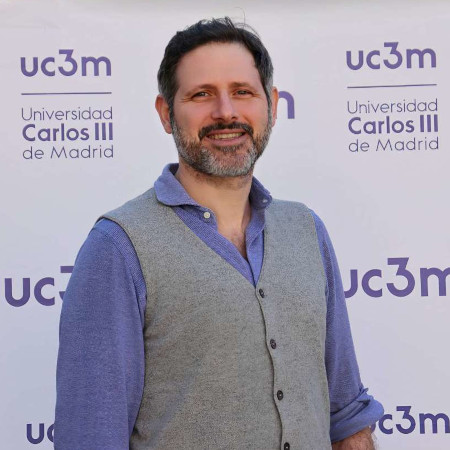
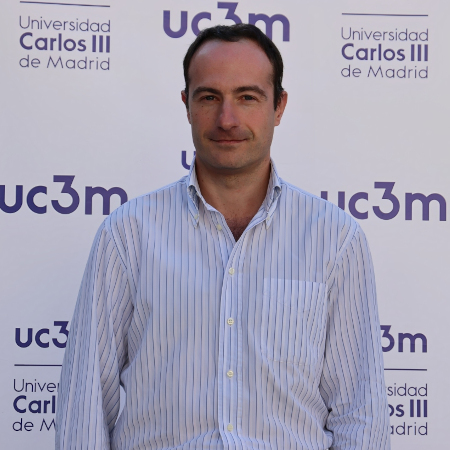
Computational Fluid Dynamics Lab
Dynamics and Control in Aerospace Systems
Plasma and Space Propulsion Team (EP2)
Tethers Applied to Aerospace Engineering
Experimental Aerodynamics and Propusion Lab
More information about research topics
ASD Lab
More information about PhD Studentship
ASD Lab
